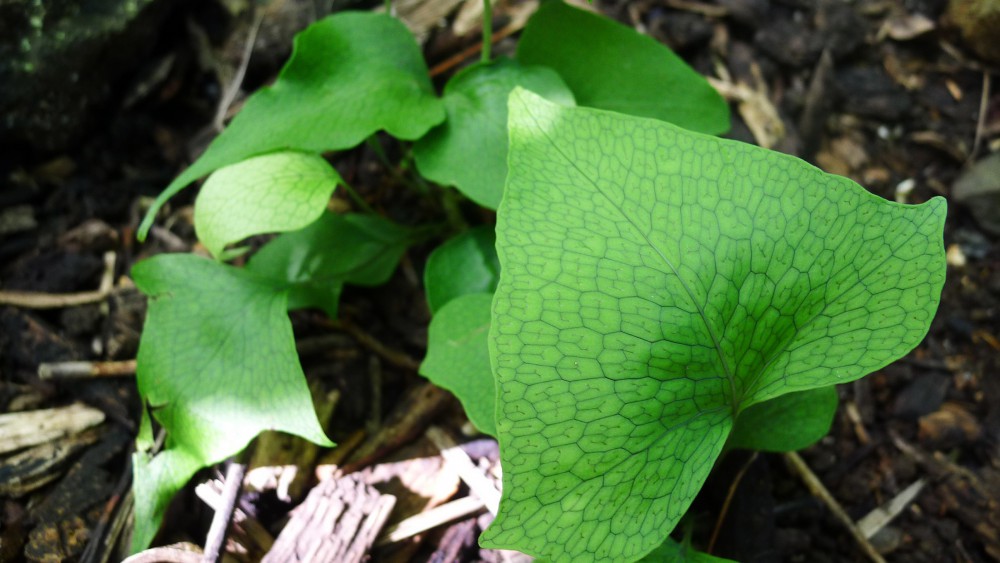
Discovering Layers of Meaning
This post is from a series called Peʻahi Stories, a place- based literacy project launched in 2022.

This weekend, we’ll gather for the first time with a small group of neighbors and our partner, Hawai‘i Land Trust to “talk story” about the history of our area–our ahupua‘a (known as Pe‘ahi), the neighboring ahupua‘a, and the greater moku (land district) of Hāmākualoa. We’ll gather in small groups a few times this year in the Merwin garden to share knowledge, swap stories, and learn from one another.
Along with this series of gatherings, we begin a new series of stories in our online journal. Pe‘ahi Stories is born of our intention to know the site of The Merwin Conservancy intimately, to understand the layers of history held in this place so that we may be more thoughtful stewards. There’s also a hope that, as people relatively new in the area, our surroundings will become further animated with meaning–the kind that reaches far into the past and will help us determine our collective futures.
We took the first steps on this journey towards place literacy within the last two years, shortly after the property was transferred into our care. Our interpretive planning process in 2020, which included conversations with dozens of community members, revealed to us how we can orient our work toward addressing community needs while protecting what is vulnerable and intimate about the Merwins’ former home. Then, in 2021, by commissioning an ethnohistorical study with Kepā and Onaona Maly of Kumupono Associates, we dove deep into the past and began to locate our position in the long history of stewards who have come before us in Hāmākualoa.
As Kepā and Onaona shared in the study, “It is important to observe that this study included the broader of cultural context of [a place’s] history in the larger cultural landscape of the region—setting the foundation for interpreting place, land use, residency, customs and practices, and transitions over time.”
In reading the study, which comprises over 300 pages of primary source documents, maps, and rich context and translation, we turned first to understanding our place name, the name of our ahupua‘a: Pe‘ahi. As the study states, “Hawaiian place names are an important record of cultural attachment and traditional knowledge of place. The names document the intimate relationship shared between the natural landscape practices, and culture of the Hawaiian people. Mo‘olelo (traditions and history) tells us that named locations are significant.”
Like many words in ‘ōlelo Hawai‘i, the name Pe‘ahi has multiple meanings. As a verb, it references a motion of waving someone to come near, a kind of beckoning motion; as a noun, it can refer to an open hand, or the bones of the hand; it is also the name of a rare, endemic fern also known as Microsorium spectrum and the name of a type of dark-colored stone with a grain said to suggest the fingers of a hand. The waving motion pe‘ahi is repeatedly mentioned in Hawaiian mele and poetic texts to describe the swaying of palm fronds and leaves in the breeze. Fitting for a breezy sanctuary filled with rare palms.
Kepā and Onaona reviewed nearly 3,000 early Hawaiian texts which included the word “pe‘ahi,” and found many uses of the word including poetical sayings, which describe gentle breezes moving through the landscape:
O ka pe‘ahi mai a ka lau o ka niu (The fanning of the coconut palm fronds)
Ke pe‘ahi mai nei ka lau o ke kalo (The gentle swaying taro leaves)
…Aloha ka lau o ka niu i ke ‘ani pe‘ahi mai (Beloved are the swaying coconut palm fronds)
Ke pe‘ahi mai la ka lau o ke kī o ‘Alanapō (and the nodding ti leaves of ‘Alanapō)
…I ke ‘ani pe‘ahi a ke koai-e, nopa i ke kula… (The beckoning sway of the crooked koai‘e trees on the plains)
Ke hea mai nei o Maui iā ‘oe, (Maui calls out to you,)
Ke ‘ani pe‘ahi mai la iluna o Haleakalā, (Beckoning from the heights of Haleakalā)
[Selected from Nupepa Hawaii, 1861-1864]
The beckoning, breezy energy of the place embodied in the layered meanings of her name, is part of what makes this place so enchanting. It may well be part of what drew William Merwin to this place in 1977, and what beckoned the many others who call this place home today. And even more significant to our commitment to becoming more place literate are the stories of those families who lived here before us, in community, for generations. It is our hope that by talking story with our neighbors and friends, the stories of generations past can remain a vibrant part of our lives, and inform our collective futures. We look forward to inviting you, dear reader, along on this ever-evolving journey.
We’re grateful to the Hawai‘i Council for the Humanities and the National Endowment for the Humanities for supporting these important conversations, and to our neighbors for their trust and friendship.
This program is made possible in part by funding from Hawaiʻi Council of the Humanities through the Sustaining the Humanities through the American Rescue Plan (SHARP) with funds from the National Endowment for the Humanities (NEH) and the federal American Rescue Plan (ARP) Act.
Any views, findings, conclusions, or recommendations expressed in this series, do not necessarily represent those of the National Endowment for the Humanities.